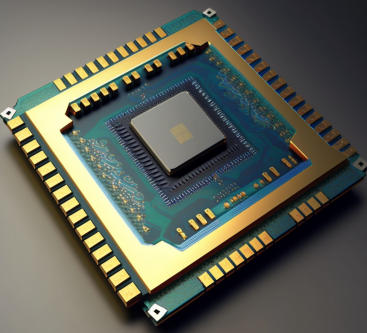A test chip is a small-scale integrated circuit that is specifically designed for testing purposes, feasibility checks and performance analysis. It serves as a platform for evaluating the functionality of individual circuit blocks, testing the reliability of manufacturing processes, and verifying the performance of the design before it is implemented in a larger chip. Test chips can include a variety of test structures, such as test circuits for measuring voltage, current, or timing, or physical structures to measure the effectiveness of different process steps, such as etching or deposition. The results of these tests help designers identify and correct errors or inefficiencies in the design or manufacturing process. Once the design has been validated, the information obtained from the test chip can be used to optimize the design of the final chip.
The above paragraph provides a summarized brief on Test Chip in VLSI. To gain more understanding of Test Chip, please read the rest of the article.
The process of designing integrated circuits (ICs) is complex and requires meticulous planning and testing to ensure functionality and reliability. One important component of the design process is the use of test chips. In this article, we will explore what test chips are and how they play a vital role in VLSI (Very Large-Scale Integration) design.
What is a Test Chip?
A test chip is a small integrated circuit that is designed and fabricated before the fabrication of the final SoC (system on chip). The purpose of the test chip is to test the functionality of the design during and after the manufacturing process. Test chips are used to check if the system is functioning as expected, and to identify any issues or defects that may have occurred during the design phase or during the manufacturing process.
Role of Test Chips in VLSI Design
VLSI design involves the integration of thousands or even millions of transistors onto a single chip. Given the complexity and scale of VLSI design, it is not feasible to manually test each individual transistor on the chip. Therefore, test chips are an essential component of the VLSI design process.
During the design phase, test chips are used to verify the functionality of various blocks or components of the IC. This helps to identify any design flaws or issues early in the process, before the main IC is fabricated. This can save time and money in the long run, as any issues can be corrected before the main IC is manufactured.
Test chips are used to test the functionality and performance of the chip. This involves running a series of tests on the test chip to check if the system is functioning as expected. If any issues are identified during the testing process, adjustments can be made to the main IC to correct the issues before it is shipped to customers.
Benefits of Test Chips
The use of test chips offers several benefits in VLSI design:
-
Reduced time to market: Test chips help to identify and correct any issues early in the design process, reducing the time needed to bring the main IC to market.
-
Increased reliability: Test chips help to identify any defects or issues in the main IC, ensuring that the final product is reliable and performs as expected.
-
Reduced costs: By identifying and correcting issues early in the process, the use of test chips can help to reduce the costs associated with manufacturing and testing the main IC and avoids respin.
